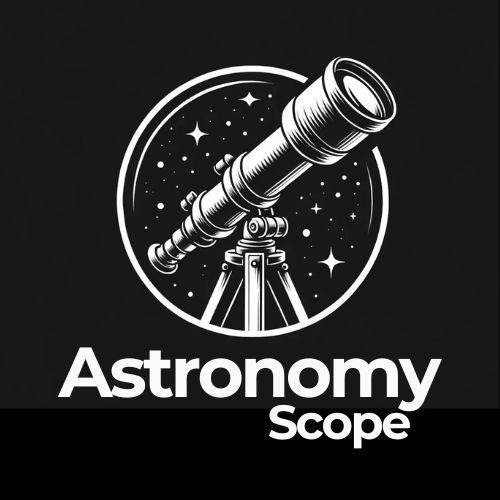For a long time now, we’ve known that we’re not the only planet in our solar system. In fact, we’re not even the only planet orbiting our sun. There are other planets within our solar system, two of which are Mars and Venus. What’s so significant about Mars and Venus? Well, these are Earth’s two direct neighbors. Venus is the second planet from the sun, with Mercury on one side of it and Earth on the other. Mars is the fourth planet from the sun, with Jupiter on one side of it and Earth on the other. So Earth is sandwiched between Mars and Venus, which means they both share our home planet as a neighbor. But what else do they have in common? And, perhaps more interestingly, what are the differences between these two spectacular planets? Time to explore the answers to these two fascinating questions!
So, what are the main differences between Mars vs. Venus? The main differences between Mars and Venus are their size, orbit, and temperature. Venus is bigger than Mars, and it’s also much warmer, both at its core and on its surface. Venus also takes much less time to orbit the sun than Mars does due to it being much closer to the solar system’s star of burning fire and gas. How they look visually and how many moons each planet has are other notable differences.

Let’s delve into it all in much further detail, shall we?
What Are The Differences Between Mars and Venus?
Mars and Venus differ from one another when it comes to their size, orbit, temperature, number of moons, axle tilt, rotation time, and their aesthetics.
Spoiler alert. There are more differences between Mars and Venus than there are similarities.
So, with that being said, let’s explore this long list of key differences one by one.
Size and Mass
Every planet in our solar system has its own unique size and mass when compared to the others.
Venus and Mars are two of the smaller planets in our solar system (although neither are the smallest, that title belongs to Mercury). When putting Mars and Venus up against each other on the size front, it is actually Venus that comes out on top.
Let’s talk diameter first. Venus has a diameter of 12,104km compared to Mars’ diameter of a mere 6,779km. That’s one to zero in Venus’ favor.
Next is surface area. Venus has a surface area of 460.2 million square kilometers, whereas Mars has a surface area of 144.8 million square kilometers. That makes it 2 to zero for Venus.
Finally, let’s talk about mass.
Venus has a mass of 4.867 × 10^24 kg compared to Mars’ 6.39 × 10^23 kg. The key figure is Venus’s 10^24 kg compared to Mars’s 10^23 kg. This is a clear indication that Venus is the heavier planet.
These figures place Venus as the sixth biggest planet in our solar system, which means they are only actually bigger than Mars, which sits at seventh, and little old Mercury.
Orbit of the Sun
As has been mentioned earlier, Venus is the second planet from the sun, whereas Mars is the fourth planet from the sun.
Distance from the sun influences the time it takes for a planet to complete one orbit of the sun.
As Venus is much closer to the sun than Mars is, it’s no surprise that it takes less time to orbit the sun.
Venus takes 225 days to orbit the sun.
Mars, on the other hand, takes about 687 days to orbit the sun.
Temperature
Two key temperatures are recorded for each planet we study. The first is the temperature of the planet’s surface. The second is the temperature of the planet’s core.
On both of these counts, Venus is hotter than Mars.
There are many reasons for this. One of the main reasons comes down to Venus being closer to the sun than Mars is. Because Venus is closer, its surface is kept warmer by stronger rays of sunshine that reach it.
In contrast, Mars is further away from the sun, so the strength of the sun’s rays isn’t as substantial.
What are the actual figures?
Well, Mars’ surface temperature is approximately -88.6 degrees Fahrenheit (-67 degrees Celsius). Venus’s surface temperature is approximately 887 degrees Fahrenheit (475 degrees Celsius). So, you won’t freeze to death on Venus, as you would on Mars, but you will boil instead.
Then, when it comes to core temperature, Venus’ is recorded at approximately 9,392 degrees Fahrenheit (5,200 degrees Celsius), whereas Mars has a core temperature of approximately 2,462 degrees Fahrenheit (1,350 degrees Celsius).
Number of Moons
One of these planets has moons. The other does not. Can you guess which one does and which one doesn’t?
The answer is that Mars has 2 moons, whilst Venus has 0.
Axial Tilt and Rotation
Not all of the planets in our solar system tilt on the same axle. Although, some of the figures are very similar when compared.
Between Mars and Venus, the difference in axial tilt is significant.
Mars has an axial tilt of 25 degrees, whilst Venus’ is a mere 3 degrees.
There is some correlation between axial tilt and rotation time; however, this isn’t the only factor that influences how long it takes for a planet to rotate once on its axis.
But the correlation certainly stands when analyzing the rotation times of Venus and Mars, that planets with more of an axial tilt tend to rotate quicker than those who have less of a tilt. Although, it’s not always the case, and as I’ve already said, it’s not the only factor at play.
Mars, which tilts at 25 degrees, takes 24 hours to complete one rotation of its axis. As you may have noticed, this is quite a similar figure to that of Earth.
Venus actually takes the longest out of all of the planets in the Milky Way to complete just one rotation. It takes about 243 days to complete this rotation.
Aesthetic
If you look at pictures of these two planets, you’ll notice there is a clear difference in terms of aesthetics.
Venus appears as a yellowy-white color. Mars is red!
Venus’ terrain is predominantly volcanoes and magma, whereas Mars is predominantly rocky and pasty.
Fun fact: Venus is the brightest planet in our solar system.
What Are The Similarities Between Mars and Venus?
Both Mars and Venus are similar when it comes to chemical composition, orbit pattern, shape, the fact that they both have hotter central cores, they both have a gravitational pull, neither can support human life, neither has been visited by humanity, and neither have any rings around them.
Even though Mars and Venus are starkly different in comparison, they do share some key similarities.
Once again, let’s explore each of these individually.
Chemical Composition
There are two types of planets found in our solar system. These two different types are gas giants and terrestrial planets.
Let’s define each of these types of planets before we categorize Mars and Venus.
A gas giant is a planet composed of gases, primarily hydrogen and helium.
A terrestrial planet is a planet composed primarily of silicate rocks or metals.
Where do Mars and Venus both fit in? Well, they both fit into the terrestrial planet category as they are rocky planets predominantly made out of silicate rocks and metals.
Mars is specifically composed of predominantly iron, nickel, and sulfur.
Mars and Venus are joined in the terrestrial planet category by Mercury and Earth.
The other four planets, Jupiter, Saturn, Uranus, and Neptune, fit into the gas giant category.
Orbit Pattern
Sure, Venus takes much less time to orbit the sun than Mars does.
And yet the pattern through which these planets orbit the sun remains the same.
Both Mars and Venus have circular orbits of the sun.
Both Are Spherical In Shape
Simple this one. We don’t have cubed planets. Both Venus and Mars are spherical in shape.
Both Have a Hotter Central Core
Venus has a hotter core and surface temperature than Mars does.
However, the fact that both these planets share is that their cores are much warmer than their surface areas.
Gravitational Pull
Both Mars and Venus, like all the other planets in our solar system, have a gravitational relationship with the rest of the universe.
They have this relationship because they both possess a gravitational pull force. Mars’ gravitational pull ensures that its two moons stay within close orbit of itself.
Can’t Support Human Life
Without the right technology, humans couldn’t live on either Venus or Mars.
Firstly because there isn’t oxygen on either of them.
Secondly, our bodies couldn’t withstand their hostile temperatures.
Humans Haven’t Visited
The moon can’t support human life, yet we’ve managed to visit it because we have the right technology to survive whilst exploring it.
Unfortunately, we aren’t able to visit either Mars or Venus right now, despite them both being neighbors.
They’re still just too far away.
One day we might have the right technology to pay our first human visits, as it’s worth noting that we have sent robots to these planets.
Both Don’t Have Rings
Fairly simple, this one. Neither of these planets has any rings surrounding them.
This feature is exclusively held by the likes of Jupiter, Saturn, Uranus, and Neptune.
If you’ve been paying attention, you’ll notice that all four of the ring holders in our galaxy belong in the gas giant category.
A coincidence? I think not!
Finally
So, it turns out there’s a lot that splits Mars and Venus.
But they do have some things in common that they can talk about.
Either way, these are two mesmerizing planets that we are lucky to call Earth’s neighbors.
Other planetary comparisons you may want to see:
- Mars vs Uranus [How Do The Planets Differ?]
- Mars Vs Neptune [How Do The Planets Differ?]
- Saturn vs Mars [How Do The Planets Differ?]
- Mars vs Jupiter [How Do The Planets Differ?]

Hey, my name is Jeremy. I’m a passionate and seasoned astronomer who loves nothing more than observing the night sky. I also love researching, learning, and writing all things Space and the Universe. I created Astronomy Scope to share my knowledge, experience, suggestions, and recommendations of what I have learned along the way while helping anyone to get into and maximize their enjoyment of the hobby.

